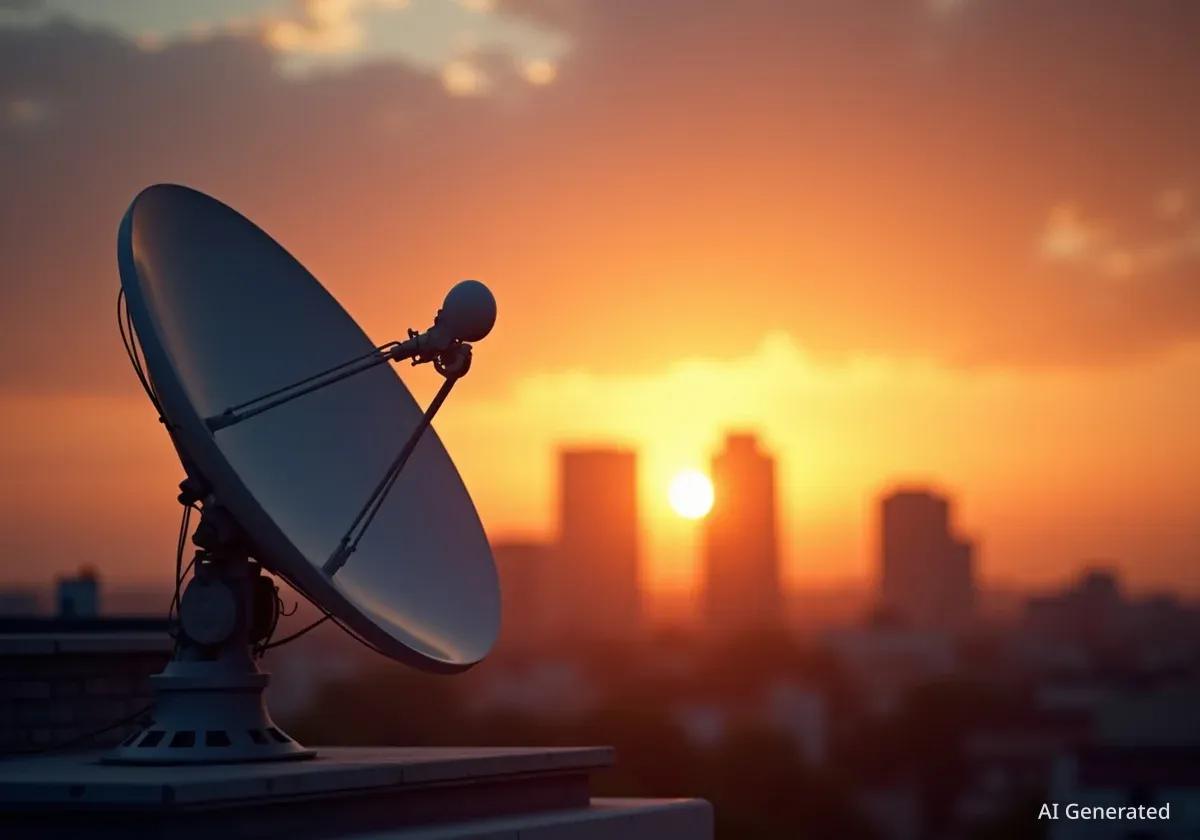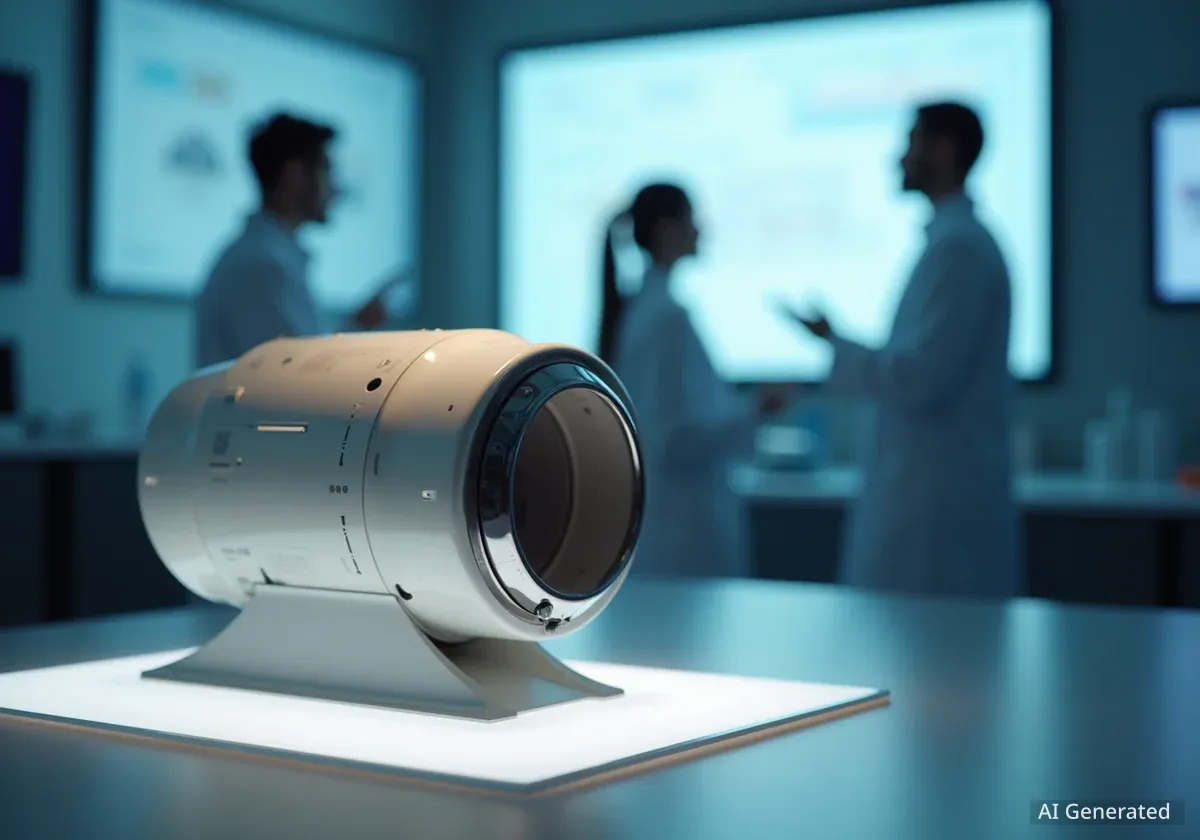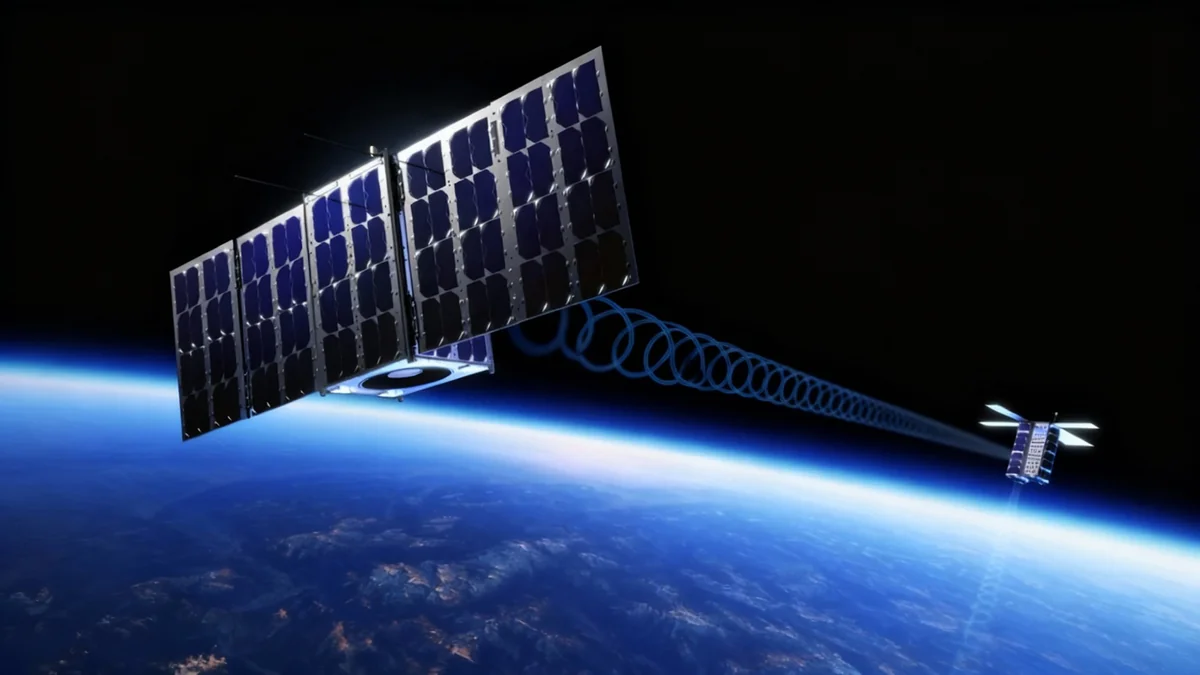AST SpaceMobile and Verizon have signed a definitive commercial agreement to provide space-based cellular broadband service directly to standard smartphones. The partnership aims to deliver connectivity to Verizon customers across the continental United States, with services scheduled to begin in 2026.
The agreement solidifies a strategic partnership announced in May 2024. It will integrate AST SpaceMobile's low Earth orbit (LEO) satellite network with Verizon's existing terrestrial infrastructure, aiming to eliminate mobile dead zones in remote and underserved areas without requiring customers to purchase specialized hardware.
Key Takeaways
- Verizon and AST SpaceMobile have signed a definitive commercial agreement for satellite-to-phone services.
- The service is planned to launch for Verizon customers in the continental U.S. starting in 2026.
- It will utilize AST SpaceMobile's satellite network and Verizon's 850 MHz spectrum.
- The technology allows standard, unmodified smartphones to connect directly to satellites.
- Successful tests, including voice and video calls, have already been completed between the two companies.
Details of the Agreement
The collaboration is designed to enhance Verizon's network coverage by leveraging satellite technology. The service will use Verizon's premium multi-operator 850 MHz cellular spectrum, extending its reach into areas where traditional cell towers are impractical or non-existent. This integration promises to provide continuous connectivity for users, whether they are in urban centers or remote locations like national parks and rural highways.
Abel Avellan, Founder, Chairman, and CEO of AST SpaceMobile, commented on the partnership's scope. "Through our definitive commercial agreement with Verizon, we are working to deliver space-based cellular broadband coverage from space across the continental United States," he stated.
"The agreement will extend the scope of Verizon’s 850 MHz premium low-band spectrum into areas of the U.S. that would benefit from the ubiquitous reach of space-based broadband technology."
This move is part of a broader industry trend where mobile network operators are looking to space to fill coverage gaps and provide more resilient networks for their customers.
What is Low Earth Orbit (LEO)?
Low Earth Orbit satellites operate at an altitude of 2,000 kilometers or less, much closer to Earth than traditional geostationary satellites (which orbit at 35,786 km). This proximity reduces latency, or the time it takes for a signal to travel to the satellite and back, making LEO networks suitable for services like voice calls and video streaming that require real-time data transmission.
How the Technology Works
AST SpaceMobile is developing what it describes as the first and only space-based cellular broadband network designed to connect directly with everyday smartphones. The company's satellites feature large commercial communications arrays deployed in low Earth orbit.
A key feature of this system is that it eliminates the need for specialized satellite phones or other custom hardware. The network is engineered to be compatible with the devices customers already own. It operates across various spectrum bands, including AST SpaceMobile’s licensed spectrum and the low- and mid-band spectrum of its mobile network operator partners worldwide.
Global Connectivity Mission
According to AST SpaceMobile, its mission is to eliminate the connectivity gaps faced by the world's five billion mobile subscribers and bring broadband to billions more who remain unconnected. Partnerships with major carriers like Verizon are central to achieving this goal.
This direct-to-device approach represents a significant technical challenge but offers a seamless user experience. Customers' phones will automatically switch between Verizon's terrestrial network and AST SpaceMobile's satellite network, ensuring uninterrupted service.
Successful Technology Demonstrations
The definitive agreement follows a series of successful tests that validated the technology's capabilities. In a recent demonstration, the companies completed direct voice and video calls using standard, unmodified smartphones connected to an AST SpaceMobile BlueBird satellite in orbit.
During one key test, a Voice over LTE (VoLTE) call was initiated from a standard smartphone on Verizon's network in Texas. The call was routed through the satellite to another Verizon smartphone located in New Jersey. The companies reported that the call quality was clear, proving the viability of the satellite-to-cellular link for everyday communications.
- Voice Calls: Successful VoLTE calls were made between Texas and New Jersey via satellite.
- Video Calls: The system also supported two-way video calling.
- Messaging: Two-way Rich Communication Services (RCS) messaging was also tested successfully.
These milestones are critical in demonstrating that the technology is ready for commercial deployment and can meet the performance expectations of consumers.
Implications for the Future of Connectivity
This partnership signals a major step toward a future of ubiquitous connectivity, where geographic location is no longer a barrier to communication. For Verizon customers, it means enhanced reliability and the end of 'no service' areas during travel, outdoor activities, or emergencies in rural parts of the country.
Srini Kalapala, Senior Vice President of Technology and Product Development at Verizon, emphasized the transformative potential of the collaboration.
"This partnership with AST SpaceMobile is a good step forward in our mission to build a seamlessly connected world. We are not just filling in the map; we are creating a new paradigm of connectivity that will unlock the full potential of the digital age."
By combining its extensive terrestrial network with AST SpaceMobile's satellite infrastructure, Verizon aims to create a hybrid network that offers unparalleled coverage and reliability. This could have wide-ranging benefits, from improving safety for hikers and remote workers to providing critical communication links for first responders during natural disasters when terrestrial networks may be compromised.
As the 2026 launch date approaches, both companies will continue to work on network integration and further testing to ensure a smooth rollout of the service across the continental United States.





